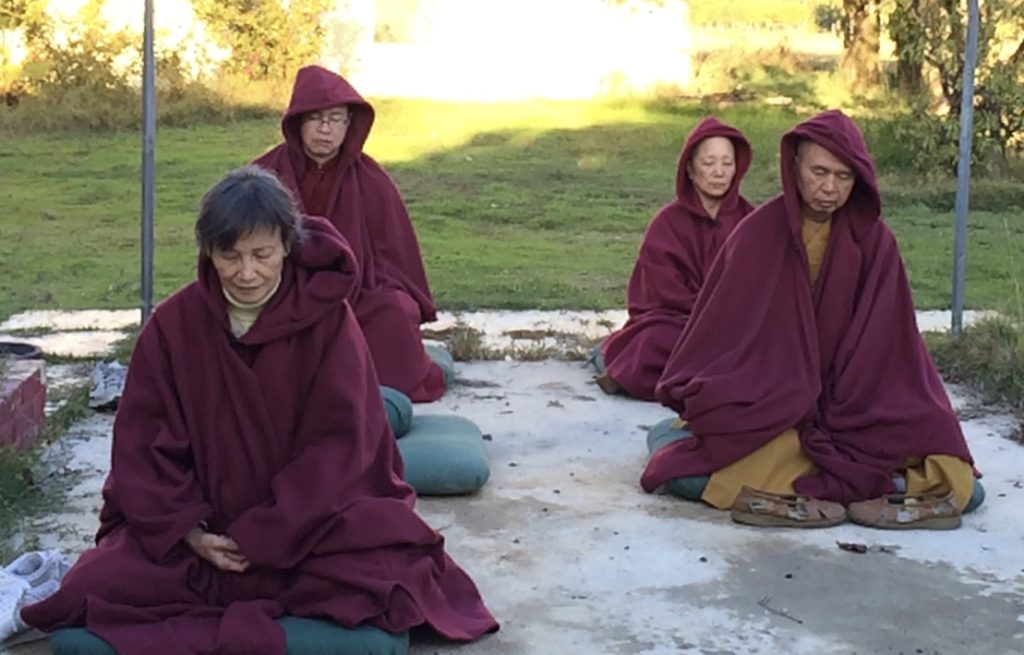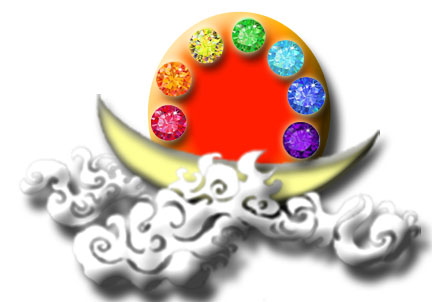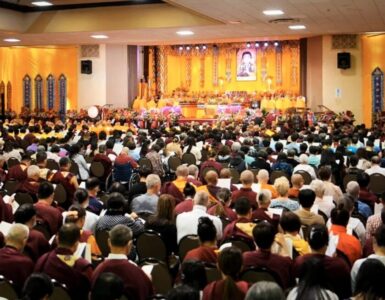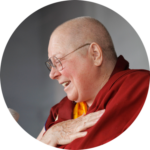
We will begin our study of the “128 Evil and Erroneous Views” from the Supreme and Unsurpassable Mahamudra of Liberation (SAUMOL) next Sunday, May 17, 2020 starting at 2:00 pm. The Buddha Master has said that you will not become enlightened in this lifetime if you hold any of these views. They should be used to evaluate all buddhist masters, rinpoches, and dharma kings as well as any Buddhist texts or translations of texts, commentaries, or sutras. However, they should mostly be used to evaluate your own mind, speech, and behavior.
Since we just finished a class on The Great Dharma of Zen, we will start on Sunday with four views held about meditation practice and follow that with ten more on cultivation also because we just studied that as well. After that there are 18 more categories of views that we need to investigate and understand. I don’t know how many classes that will take as we will take as much time as we need for each view.
The titles of each of the mini-discourses given by the Buddha Master that we will use as text for these classes is different from what I now have as the most recent translation of the SAUMOL. I will use the most recent translation first and include the original that you will find on-line with the text in parentheses. Please note that the “Views” are all written as negatives–what you should not do, say, or think.
The following are the four “Erroneous Views” related to meditation. There are no “Evil Views” listed on meditation.
Erroneous Views on Meditation
- Acknowledging the Shifting the Mind-Consciousness Practice as a meditation practice (THE VIEW THAT IT IS ACCEPTABLE TO PRACTICE MEDITATION IN LIEU OF PUTTING CONCEPTS INTO PRACTICE)
Even some greatly virtuous ones follow this view. I am referring to people of true great virtue. Some ancient virtuous ones also followed this view. They at least reflected this view in their speech karma but did not reflect it in their actual conduct. Those with this view frequently use terms such as the meditation practice of bodhicitta, the meditation practice of the four limitless states of mind, and the meditation practice of the ten virtues. If at the very beginning one uses meditation to practice bodhicitta, the four limitless states of mind, or the ten virtues, that is a false practice. Meditation practice involves realizing the concept of emptiness, realizing that phenomena are devoid of characteristics or attributes, realizing non-attachment, cutting off deluded thoughts, and returning to one’s original mind. This is devoid of the real practice of compassion. Thus, no merit can be produced. How can one possibly practice bodhicitta like that? Therefore, when practicing the four limitless states of mind or bodhicitta, beginning practitioners should not rely upon meditation or contemplation. They should rely upon the practice of putting concepts into practice. They should transform their fixed concepts into actual deeds. They should focus their mind and transform that focused mind into action. They must put their concepts into practice, carry out the task of benefiting living beings, and implement those dharma matters that they contemplate. They should do so in a concrete manner through each word that they utter and each action that they take. This is what is meant by putting concepts into practice. Only when one is proficient in putting concepts into practice can one turn to meditation practice to cultivate the state of not being attached to anything. From meditation one will enter the practice of concentration. From there one can penetrate deeply into the reality that emptiness and existence are not different and can eventually realize the state of applying usages that arise from Buddha-nature.
- Acknowledging sitting meditation as cultivating oneself (THE VIEW THAT SITTING MEDITATION IS CULTIVATING YOURSELF)
Some people say that they are cultivating themselves when they sit in meditation. Sitting meditation is not cultivation. It is just sitting meditation. Sitting meditation is for directly experiencing what one’s original nature is. Through direct observation, one comes to understand one’s mind and see one’s original nature. However, this goal may not always be achieved. Some people use sitting meditation with the goal of directly experiencing the ultimate truth of dharma principles but may not be able to do so. Cultivating oneself is a completely different matter. Sitting meditation is less than one-tenth of cultivation. Meditation is just one of the six paramitas, having nothing to do with the other five [in terms of practice]. In cultivating oneself, one must face living beings in real life, face one’s own mind, and act as the Buddha acted.
- Acknowledging that the light one sees when one’s eyes are closed is a manifestation of the power of Buddha-dharma (THE VIEW THAT THE LIGHT YOU SEE WHEN YOUR EYES ARE CLOSED IS A MANIFESTATION OF BUDDHA-DHARMA POWER)
Those with this view think that the light they see when their eyes are closed is a manifestation of Buddha-dharma or Buddha power. You must remember the following. The light seen when your eyes are closed is not a manifestation of the power of the Buddha-dharma. Illusory phenomena are not manifestations of the power of the Buddha-dharma. The power of the Buddha-dharma is manifested in real things. For example, what so many of you personally saw and experienced today was real, such as the realization power of Gar Tongstan, the tummo concentration dharma of Kaichu, and the state of realization of Miaokong and Akou Lamo. Of course, there are many other real things that you have not seen. In short, non-real light seen when the eyes are not open is an illusory phenomenon. Even if you see light with your open eyes, it still must be determined whether the light was from true Buddha power or from electricity.
- Acknowledging that only through the Zen sect can one illuminate one’s mind and see one’s original nature (THE VIEW THAT ONLY PRACTITIONERS OF THE ZEN SECT CAN UNDERSTAND THEIR MIND AND SEE THEIR ORIGINAL NATURE)
Many people think that only practitioners of the Zen sect can understand their mind and see their original nature. They think there is no other path to accomplish that. This is incorrect. Practitioners of any sect can understand their mind and see their original nature. When you reach the requisite degree of realization through your practice, you will understand your mind and see your original nature. True liberation is attained only by reaching that degree of realization.




I have a question about Erroneous Views on Meditation #2: It states: “Meditation is just one of the six paramitas, having nothing to do with the other five.” One of the other five paramitas is wisdom, which I understand is related to all the other paramitas. But, the quote from Erroneous Views on Meditation #2, above, seems to say that the meditation paramita has nothing to do with the wisdom paramita. How can that be?
I think it is a truncated and probably literal translation taken out of context, because I agree with you and there are other teachings by the Buddha Master that talk about the interrelationship of the paramitas and many things. Here the Buddha Master is talking about how you actually practice meditation. Remember in “The Supreme and Unsurpassable Mahamudra of Liberation” He talks about how you use one technique, that is “Shifting-the-Mind,” to practice cultivation of character, and quite a different method to practice meditation. One relys on consciousness until you are able to transform consciousness into prajna. The earlier texts talk about how you need both. You know, no doubt, the teachings about the six paramitas in the “Vajra Yoga Perfection Dharma” where it is said that “… you cannot practice certain paramitas while neglecting others…If you are concentrated yet not wise, then you will be stubborn. If you are wise but not concentrated, then your worldly emotions will be easily aroused.” The preliminary translation from “Imparting the Absolute Truth through the Heart Sutra” says almost the same thing, that if you have meditative concentration but not wisdom, then you will have wild wisdom, worldly emotions, and ignorance. Wisdom is related to all the paramitas as you say. You do not “practice” wisdom per se, but you gain wisdom through the practice of the other five. Good question. Thanks.
Please note that I added in brackets the word [in terms of practice], which is my understanding of what is meant here.